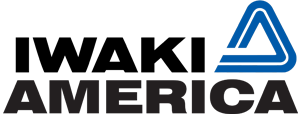Suction Side Issues Troubleshooting
Maintaining optimal performance of pumps is crucial in various industrial and domestic applications. Suction side issues such as starvation, submergence, cavitation and NPSH (Net Positive Suction Head) problems can significantly impact pump efficiency and longevity. Understanding these issues and implementing appropriate troubleshooting measures is essential for ensuring uninterrupted operation.
Before delving into troubleshooting, it’s vital to observe precautions related to pump operation and maintenance. Addressing issues such as starvation, submergence, cavitation and NPSH requires a proactive approach to prevent potential damage and inefficiencies. Here are some precautions to consider regarding the pump:
Cavitation
Cavitation happens when the pressure on the suction side of the pump dips below the fluid’s vapor pressure, causing bubbles to develop and collapse within the pump. This behavior can damage pump components, diminish efficiency, and raise noise levels. Troubleshooting cavitation entails determining and resolving the underlying causes:
Increase suction pressure: Increasing suction pressure by altering system parameters like fluid temperature or pressure can help to prevent cavitation.
Reduce pump speed: Lowering the pump speed reduces the pressure drop at the suction side, lowering the danger of cavitation.
Check for suction-side constraints: Any obstacles or limits in the suction line can lead to cavitation. Check the suction line for clogs, undersized pipes, and valve closures that could be causing pressure drops.
Improve NPSH margin: Having an acceptable Net Positive Suction Head (NPSH) margin can assist prevent cavitation. Evaluate system pressures and fluid characteristics to ensure that the pump’s NPSH requirements are met.
Install a cavitation-resistant pump: Consider replacing the existing pump with a model designed to withstand cavitation, such as a double-suction or multistage pump.
Address impeller damage: Cavitation can result in erosion and pitting of the pump impeller. Inspect the impeller for signs of deterioration and repair it as needed to restore pump efficiency.
By addressing cavitation issues promptly and implementing preventive measures, operators can maintain optimal pump performance and extend equipment service life.
Starvation
Starvation occurs when the pump doesn’t receive an adequate supply of fluid, leading to issues such as cavitation, overheating, and damage to pump components. It can occur due to various reasons, including insufficient fluid levels in the source tank, air leaks in the suction line, or restrictions/blockages hindering fluid flow.
Troubleshooting starvation involves ensuring that the pump always has enough fluid to operate efficiently:
Maintain adequate fluid levels: Regularly check the fluid level in the source tank or reservoir to ensure it meets the pump’s requirements. Refill the tank as needed to prevent the pump from running dry.
Inspect for air leaks: Air leaks in the suction line can disrupt fluid flow and cause cavitation. Thoroughly inspect all connections, valves, and fittings for leaks and seal them appropriately to maintain air tightness.
Clear obstructions: Check the suction line for any blockages or restrictions that may be impeding fluid flow to the pump. Clearing these obstructions will ensure uninterrupted fluid supply to the pump.
Submergence
Submergence refers to the condition where the pump inlet is not fully submerged in the fluid it’s designed to handle. This can lead to air ingestion, cavitation, and reduced pump efficiency. Troubleshooting submergence involves ensuring that the pump inlet remains fully immersed in the fluid:
Maintain proper fluid levels: Regularly monitor the fluid level to ensure it covers the pump inlet completely. Adjust the fluid level as needed to prevent air ingestion and maintain optimal pump performance.
Install a foot valve: In applications where the fluid level fluctuates, installing a foot valve at the pump inlet can help maintain prime and prevent submergence-related issues by retaining fluid in the suction line.
NPSH (Net Positive Suction Head)
NPSH is a critical parameter that determines the suction performance of a pump and prevents cavitation. It represents the difference between the fluid’s pressure at the pump suction and its vapor pressure. Troubleshooting NPSH issues involves ensuring that the pump’s NPSH requirements are met:
Verify system pressure conditions: Check the system pressure at the pump suction to ensure it exceeds the fluid’s vapor pressure. Increasing system pressure or reducing the pump’s suction lift can help improve NPSH conditions.
Maintain fluid properties: Changes in fluid temperature, viscosity, or composition can affect NPSH requirements. Ensure that the fluid properties remain within acceptable limits to prevent cavitation.
Avoid suction line restrictions: Any restrictions or obstructions in the suction line can cause pressure drops and reduce NPSH. Keep the suction line free from debris, scale buildup, and undersized piping to maintain optimal pump performance.
By addressing starvation, submergence, cavitation and NPSH issues promptly and implementing preventive measures, operators can ensure the efficient and reliable operation of pumps in various applications.





Videos